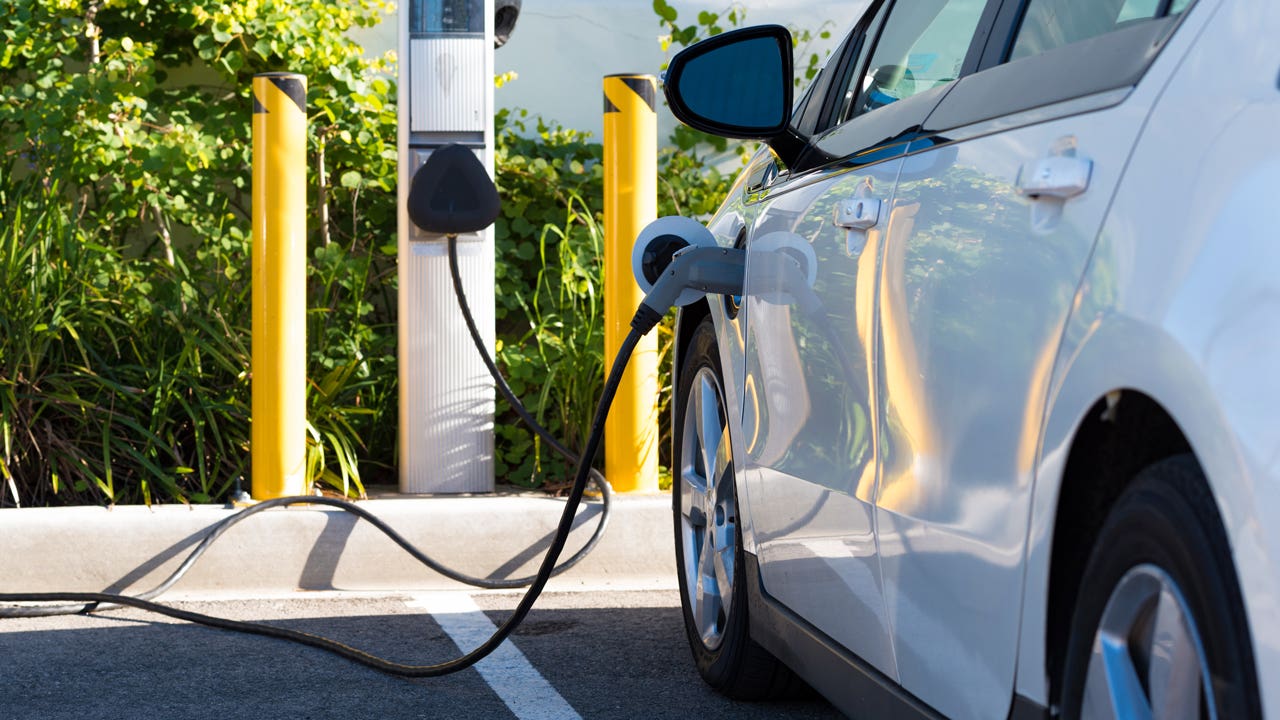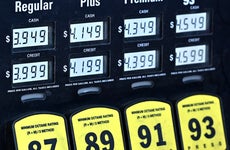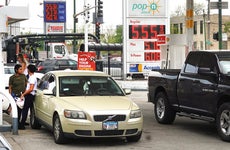Electric vehicle charging is a growing credit card rewards category

The Bankrate promise
At Bankrate we strive to help you make smarter financial decisions. While we adhere to strict , this post may contain references to products from our partners. Here's an explanation for . The content on this page is accurate as of the posting date; however, some of the offers mentioned may have expired. Terms apply to the offers listed on this page. Any opinions, analyses, reviews or recommendations expressed in this article are those of the author’s alone, and have not been reviewed, approved or otherwise endorsed by any card issuer.
Gas prices have been at or near record highs for much of this year, putting gas credit cards in high demand. But what if you drive an electric vehicle? An increasing number of credit cards are offering enhanced rewards for EV charging expenses.
For example, the PenFed Platinum Rewards Visa Signature Card offers 5 points per dollar at EV charging stations and on gas paid at the pump. The Sam’s Club Mastercard recently started giving 5 percent cash back at EV charging stations (along with most gas stations). And U.S. Bank has expanded the gas category to also include EV charging stations on all of its business and consumer cards.
While I always like to see credit card rewards categories expanding, and while electric vehicles can provide environmental and financial benefits, I have a lukewarm take on the impact of EV credit card rewards. I can boil it down to two things: Is this spending category significant enough to make a noticeable difference? And what about at-home charging?
How much it costs to charge an electric vehicle at home
If you’re charging your electric vehicle at home, those costs are hitting your home electric bill and thus are not eligible for EV charging rewards on the aforementioned credit cards. Those all refer to public charging stations. There are very few credit cards that offer elevated rewards for home utilities.
The best option is probably the U.S. Bank Cash+ Visa Signature Card. Cardholders get 5 percent cash back in two categories which they select from a list of options (on up to $2,000 in combined quarterly purchases, then 1 percent cash back after that). Home utilities are one of the potential selections. The card also gives 2 percent cash back on gas and at public EV charging stations.
How much cash back can you earn from at-home charging?
Kelley Blue Book estimates that it costs an average of $55 per month to charge an electric vehicle at home. They came up with that figure by dividing the average number of miles that Americans drive per year (about 14,200, per the Federal Highway Administration) by 12 months and assuming that an electric vehicle can drive three to four miles for each kilowatt-hour (kWh) of electricity it consumes. Each kWh costs about 14 cents, according to the U.S. Energy Information Administration.
If you get 5 percent cash back on that $55 each month, that’s only $2.75 in monthly rewards or $33 over the course of a full year. In and of itself, it’s probably not enough to justify signing up for a new credit card. You would likely earn a lot more by leaning into heavier spending categories such as groceries, travel and dining, given you pay your credit card bill in full every month and aren’t losing money on interest charges.
What about public charging stations?
The math is more favorable if you use a lot of public charging stations, but not by much. A Wall Street Journal reporter recently spent $175 in charging costs on a 2,000-mile road trip. Multiplying by seven gets us to approximately the number of miles the typical American drives each year. Then, $175 multiplied by seven is $1,225 in annual charging costs. Five percent of that is $61 in rewards. It’s something, but it’s probably far from the typical household’s top spending category. Again, most people would be better off prioritizing other categories.
The bottom line
While some people enjoy mixing and matching many different credit cards in order to maximize rewards, most of us prefer to use no more than two or three on a regular basis. If you’re only using a couple of cards, I suggest emphasizing your top spending categories. Or keep it really simple and use a no annual fee 2 percent cash back card for everything. Electric vehicle ownership is on the rise, but EV charging costs are unlikely to be among your biggest spending categories. You should probably focus your rewards strategy elsewhere.
Have a question about credit cards? E-mail me at ted.rossman@bankrate.com and I’d be happy to help.
Related Articles



